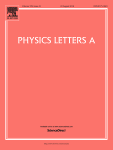Complementarity of absolute and relative motion
- DOI: 10.1016/0375-9601(88)90799-2
- Get rights and content
Abstract
The physical origin of inertial forces is investigated within the framework of general relativity. It is shown that the translational inertial force cannot be caused by the gravitational influence of distant masses. Minkowski's absolute spacetime must therefore be called upon in order to explain inertial forces. Nevertheless, only relative motion appears to have operational significance. This dichotomy is resolved in this paper by extending the principle of complementarity to include motion. Wave-particle duality is associated with the nature of a particle: its motion has corresponding complementary aspects in absolute and relative movements, respectively. This viewpoint is adopted in the description of motion in a gravitational field.
References
- [1]
Found. Phys., 16 (1986), p. 619
- |
- [2]
Phys. Lett. A, 122 (1987), p. 67
- | | |
- [3]
Phys. Lett. A, 122 (1987), p. 299
- | | |
- [4]
The science of mechanics
Open Court, La Salle (1960) ch. II, sec. VI (n.b. part 6)
- [5]
Science and hypothesis
Dover, New York (1952)
- [6]
J.J.C. Smart (Ed.), Problems of space and time, Macmillan, New York (1964), p. 313
- [7]
Gen. Rel. Grav., 16 (1984), p. 711
- | |
- [8]
Astrophys. J., 216 (1977), p. 591
- | |
- [9]
Nature, 112 (1923), p. 103
- |
- [10]
Physica B, 136 (1986), p. 137
- | | |
- [11]
Phys. Rev. Lett., 4 (1960), p. 337
- | |
- [12]
Phys. Rev. D, 8 (1973), p. 4297
- [13]
Phys. Rev. D, 10 (1974), p. 1059
- | |
- [14]
A. Berger (Ed.), The Big-Bang and Georges Lemaître, Reidel, Dordrecht (1984), p. 75
Copyright © 1988 Published by Elsevier B.V.

